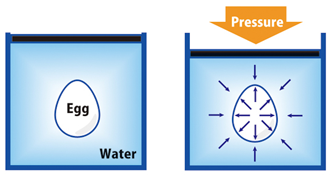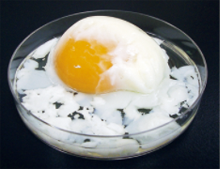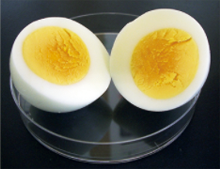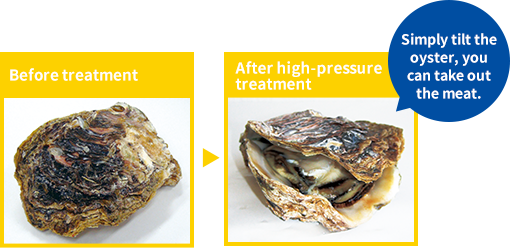What is "High-Pressure treatment"?
Practical cases where high-pressure treatment has been introduced
Denaturation of protein
High-pressure treatment can induce denaturation and gelation of protein, which opens possibility of creating food products with novel texture. The reason is that the physical properties of protein denatured by the high-pressure treatment are different from those of thermally denatured protein. In addition, the high-pressure treatment can open the shells of bivalves such as oysters and clams. The method of opening and removing the bivalve shells has been put to practical use.
Properties of egg treated with high pressure
When a high pressure is applied to an egg in water, the counterforce acts on the inside of the egg shell to balance the hydrostatic pressure applied to the outside of the egg shell, so that the egg keeps its appearance without breaking. However, the yolk and the albumen become hard like a boiled egg because the protein is denatured by pressure. The flavor and the nutrition are the same as those of the raw egg, the color of the yolk becomes brighter, and the texture is utterly different from that of raw egg or boiled egg.

Heating treatment
-

63℃×10minutes
-

100℃×10minutes
High-pressure treatment
-

400MPa×10minutes(25℃)
-

700MPa×10minutes(25℃)
Changes in physical properties of pasted fish
By the application of high-pressure treatment of 200 MPa or more, fish paste meat containing a small amount of salt pectizes smoother and more elastic than that obtained by heat treatment.

Removal of oyster shell
High-pressure treatment can detach oyster adductor muscle from the shell, so that oyster meat can be taken out only by tilting the shell. Shucking can be completed with the appearance and the size of the oyster meat being maintained by adjusting the treatment conditions .


